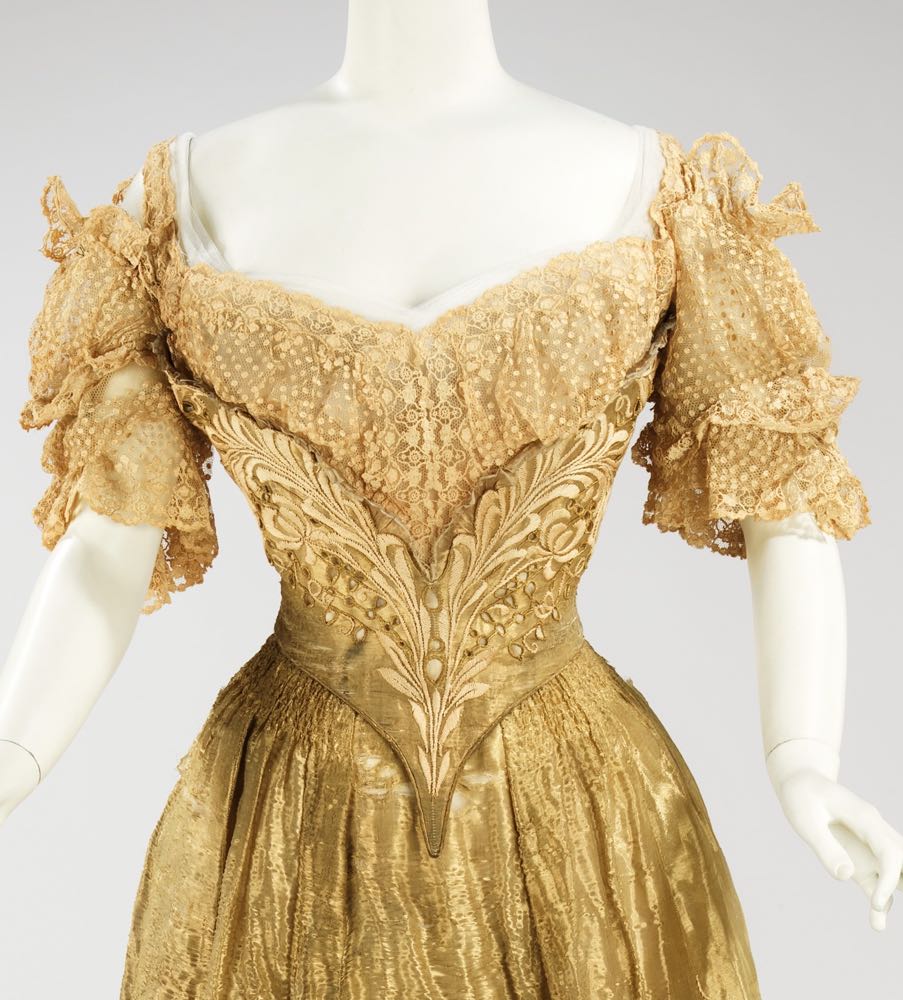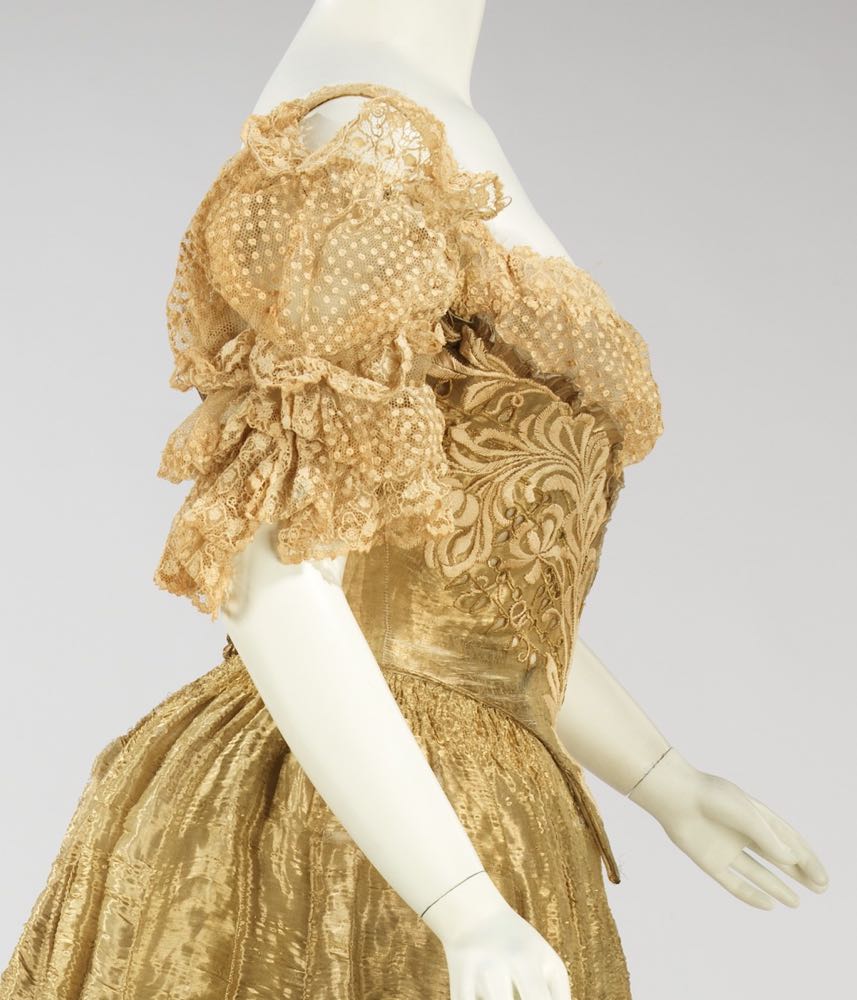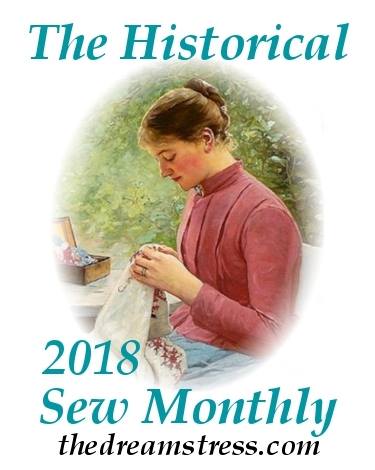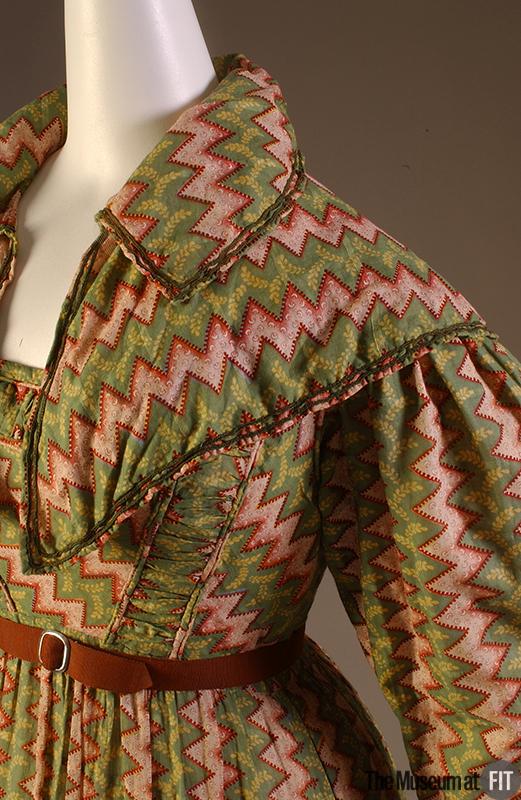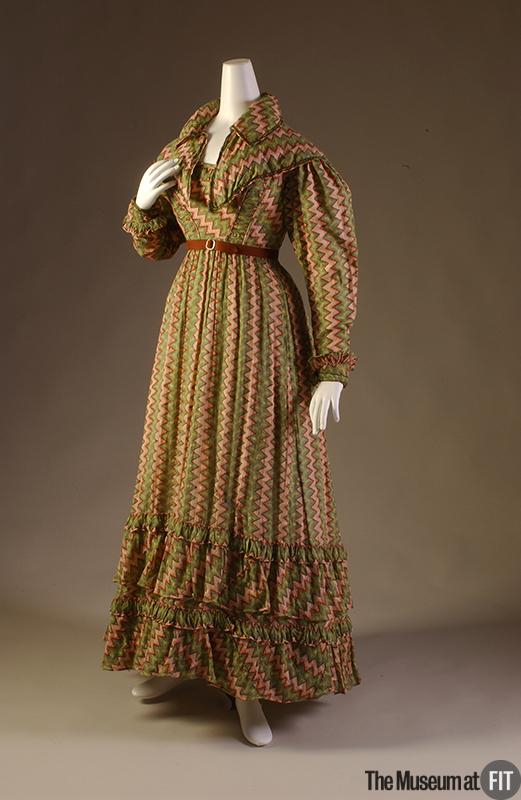Happy New Years!
To celebrate the holiday, I’ve picked a Rate the Dress suitable for wearing to a grand New Years event: a glimmering gold number by Doucet.
Last week: a ca. 1821 afternoon dress in red & green
I really wondered how last week’s zig-zagged 1820s dress would go. The 1820s have not exactly been popular in Rate the Dress. And that fabric was, by any stretch of the imagination, obnoxious. (I should point out that I sometimes love obnoxious!). The fabric definitely lost the dress some points. But other raters felt that the obnoxious fabric somehow balanced the weird 1820s details perfectly – gaining it points. One thing most could agree on was that the hem ruffles weren’t working.
The Total: 8.1 out of 10.
Respectable, but not fabulous. Better than the 1910s dress of the week before. It’s not often 1820s beats 1910s!
This week: a Doucet evening dress in glittering gold organza:
This Doucet evening dress might have been worn to a New Years eve ball. Perhaps in 1900! It’s just glittery and celebratory enough.
In double-keeping with the New Years/circle of time theme, this is a dress that demonstrates that there is nothing new under the fashion sun, from cold-shoulders to see-through evening gowns:
This extravagant evening or ballgown features glimmering gold organza, lavishly decorated with art nouveau inspired satin stitch and broderie anglaise style embroidery.
The gold organza forms a full, sweeping trumpet skirt, gathered in to the small waist with rows of shirring. The small waist is emphasised by the fitted lower bodice, which is almost reminiscent of a swiss waist, or the newly fashionable S-bend corset.
Layers of delicate spotted and floral lace hang over the fitted lower bodice: hinting at the full Edwardian pigeon breast silhouette to come. The lace is perfectly matched to the shape of the dress: indicating it was custom made for this creation.
The same lace is used to form delicate puffed sleeves, with straps on the shoulders, double puffed sleeves sitting off the shoulders, forming and a saucy ‘cold shoulder’ effect. (so 2017!)
The dress fastens up the back with fastenings that are both hidden, and highlighted, by decorative organza bows and rosettes. Elaborate back fastening decorations were a peculiar and distinctive feature of very late 1890s evening gowns.
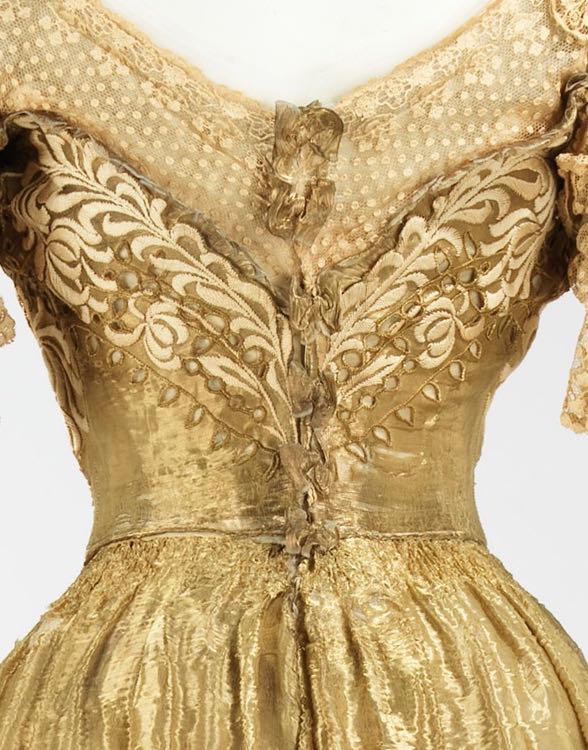
Ball gown, Jacques Doucet (French, Paris 1853—1929 Paris), 1898—1902, silk, metal, linen, Metropolitan Museum of Art, 2009.300.3274a, b
There is something decidedly lingerie-esque about this dress. The fitted lower bodice and cascade of lace over it are evening gown mirrors of a low-busted Edwardian S-bend corset (already in use amongst the fashion-forward in 1898) topped by a frothy chemise. Even the effect of the sleeves falling of the shoulders references depictions of women dressing: their chemise straps and sleeves not yet secured on by tightening the beading ribbon threaded around the neckline.
The fabric and decorations also play on the theme of undergarments. Although made of extravagant gold silk organza, the embroidery, particularly the use of broderie anglaise, heavily foreshadows the ‘lingerie gown’ fashions so typical of the 1900s and 1910s.
Typically of Doucet, the dress is composed of layers of semi-visible colours and fabrics: an eternal play of conceal and reveal. The sheer organza and openwork embroidery allow peeks of the ivory silk under-layers. Rows of delicate ruffles at the hem would have been exposed as the wearer moved and turned, further emphasising the idea of gown-as-petticoat.
Doucet was known for dressing actresses and the demimonde, though respectable society women also wore his art-influenced creations. Whoever wore this, she was definitely a woman who was quite sure of herself. She was someone who wasn’t afraid to wear a dress with more than a faint suggestion of being the most extravagant, luxuriant variation of underwear possible.
What do you think of this glimmering gold-and-lace evening gown? Is it just saucy enough for a self-assured beauty to have a little risque fashion fun? Or is underwear inspired outerwear, even when done by Doucet, terribly, terribly tacky?
Rate the Dress on a Scale of 1 to 10
(as usual, nothing more complicated than a .5. I also hugely appreciate it if you only do one rating, and set it on a line at the very end of your comment, so I can find it! Thanks in advance!)

